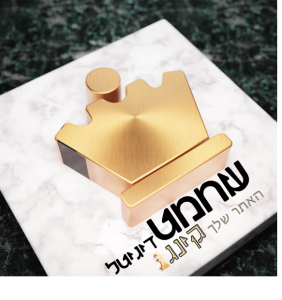Vayikra -Pesach Order(Seder) out of Disorder
The Jews are not known to be an orderly people and therefore on the only night of the year that we have a Seder (meaning Order) we ask in surprise Ma Nishstana(why is this night different)?!
The word “Seder” is originally an Aramaic word and has come to mean the night when we read the Haggadah. It actually means to “put things in order.” The Targum translates the word “archu” in the verse “Aaron’s sons shall place fire on the altar, and arrange (archu) wood on the fire. Aaron’s sons shall then arrange the cut pieces (of the sacrifice). … on top of the wood which is on the altar fire.” as “vi’sadrun,” which has the same root as the word “seder“. The word, “Seder” thus means to put things into their proper order, neatly arranged.
There certainly seems to be no logical order or symmetry in the Haggadah. It seems to consist of seemingly unconnected passages and portions, jumping from one subject and style to another. Why does this ceremony claim the name “Seder,” if what we really encounter is a state of “non-seder“? Its sections do not appear to be “neatly arranged,” nor “put into their proper order.” The answer to our question is only revealed at the conclusion of the Seder, in the song Chad Gadya, which ends the Haggada.
The song mentions ten situations that are ostensibly unconnected to each other and have no appearance of order or logic .What is so special about an ox drinking water or significant in a stick being burnt by fire, or a dog biting a cat? It is only when all comes together that we discern a Seder, in which all of the insignificant steps in the “ladder” add up to one goal: the Messianic Era, when G-d finally smites the Angel of Death, and total peace reigns on earth. To reach that goal, we need to follow the outwardly unrelated steps linking the kid, the cat, the dog, the stick, and so forth. The same applies to the Haggada as a whole.
The lesson, I think, is that even apparently disconnected incidents in our history—involving diverse Jewish communities totally isolated from one another, alternating periods of good and bad fortune, the ups and downs in our fortunes, successes and failures, Golden Ages of peace, harmony, stability, and prosperity side by side with Dark Ages elsewhere – periods of decline, chaos and repression, instability, migrations to this or that country, good children, bad children, loyalty attachment and allegiance, assimilation and so on—all move toward one predetermined and inevitable destiny: the final, full redemption of the Jewish people.
And that is the message of Pesach, as represented the fifth cup of wine, the cup of Eliyahu HaNavi, who will precede the Messiah and thus out of the disorder and chaos will eventually appear Seder

 שחמט דיגיטל
שחמט דיגיטל